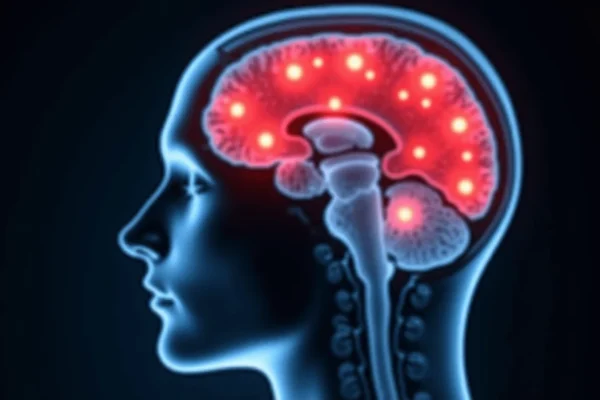Coins from 1966 rarely get the attention of collectors, especially when it comes to dimes with no silver and no visible differences. Nevertheless, there are specimens among these coins that are surprisingly worth much more than their face value. Some varieties, minting errors, and especially well-preserved coins can be of interest to collectors and can be valued in the tens and sometimes hundreds of dollars.
If you have ever wondered about the real 1966 dime value, you are not alone – and the truth may surprise you. So, now we offer you to break down which coins are really worth looking into, how to find them, determine conditions, and avoid making common mistakes. Even if you are never interested in numismatics, this information will help you look at seemingly ordinary coins in a new way.
A Quick Look at the 1966 Dime: A Year of Transition
In 1966, the U.S. Mint was still adjusting to the Coinage Act of 1965, which eliminated silver from dimes and quarters. As a result, the 1966 Roosevelt dime was produced with a copper-nickel clad composition – no silver at all. This switch was largely a response to the rising cost of silver and increasing coin hoarding during the early 1960s.
All 1966 dimes were minted in Philadelphia, and no mint marks were used on any U.S. coins that year (this policy was in place from 1965–1967 to discourage collecting during a national coin shortage). That means even though it was produced in one location, there is no letter on the coin to indicate that.
There were two primary types of 1966 dimes issued:
- Regular circulation strikes – the ones you’d find in everyday pocket change.
- Special Mint Set (SMS) strikes – better-quality versions packaged and sold to collectors. While not as polished as Proof coins, SMS dimes have sharper details and a satiny finish.
Tip: SMS dimes often get confused with Proofs. True Proofs weren’t issued in 1966 – if you see a coin with mirrored surfaces, be cautious. It may be a polished SMS dime or even a fake.

Rare and Unusual Varieties Worth More Than Face Value
While most 1966 Roosevelt dimes are worth only their face value, a small percentage stand apart due to true mint errors or strike anomalies. These are not simple circulation marks or random scratches – they are production mistakes or precision strike features that dramatically increase a coin’s value (especially if the coin is in high grade).
We are talking here not about wear and tear, but about genuine numismatic rarities – coins that left the mint in unexpected condition and are now actively sought by collectors.
Here are several verified varieties and error types from 1966 that are worth keeping an eye out for:
| Error Type | Defining Features | Interesting Fact |
| Full Torch / Full Bands (FB) | Distinct, sharply defined horizontal lines across the torch on the reverse | Very rare for 1966 due to weak strikes and worn dies – high-grade FB examples are premium-tier |
| Off-Center Strike | Coin image visibly misaligned, with blank crescent on one side | Value increases with degree of off-center and visible date – 10%+ offset is desirable |
| Double Die Obverse (DDO) | Doubling of letters in “LIBERTY” or digits in the date (especially the “6”) | Confirmed examples are subtle but real – best visible under magnification |
| Clipped Planchet | A curved chunk missing from the edge of the coin | Occurs when blanking punch overlaps previous hole – visual but uncommon |
| Wrong Planchet Error | Dime struck on a penny planchet (resulting in smaller, thinner, or reddish coin) | Rare but documented – typically weighs around 2.5g instead of 2.27g for clad dime |
These errors occur due to mechanical misalignments, die fatigue, or feed malfunctions in the minting process. What makes them especially interesting is that many of these flawed coins still made it past quality control – and into circulation.
Some of them are easy to miss at first glance. Others reveal themselves only under a magnifying glass or after a bit of careful comparison. But once spotted, they can turn a ten-cent coin into a piece worth $20, $50, even $150 or more, depending on condition.
Collector’s hack: If you think you’ve found something odd – a slight doubling, off-center design, or strange coloration – don’t rush to judge it yourself. Use a digital tool like a magnifier or even a coin evaluation app. This is where modern tools like Coin ID Scanner shine: just snap a photo, and the app can help identify known varieties, confirm errors, and estimate value – all within seconds. It’s an easy way to catch what others overlook.
How Condition and Rarity Turn Pocket Change into Collector Finds
Once you know what to look for – full torch lines, off-center strikes, doubled letters – the next big question is: how much is it worth? The answer depends on one key factor: condition. In the world of coin collecting, the state of preservation can make or break a coin’s value. A slightly worn dime might fetch a couple dollars, while the same error in pristine condition could be worth hundreds.
Collectors and grading services use the Sheldon scale, which ranges from G-4 (Good – where major features are visible but worn) – to MS-67 (Mint State meaning the coin is uncirculated and nearly perfect even under magnification). Most valuable 1966 dimes fall in the MS63 – MS67 range.
Besides grade, strike quality plays a major role, especially for full torch coins. A coin with sharply defined torch bands – clear, unbroken horizontal lines – is far more desirable than one with flat or mushy detail. Luster, or that brilliant mint glow, is also a sign of minimal handling and boosts market appeal.
But it is the rare combinations – high grade plus a real error -that command top dollar. Take a look at these real-world value ranges for 1966 dime error varieties:
Estimated Market Value Ranges for 1966 Dime Errors
| Error Type | Grade Range | Estimated Value | Rarity Level |
| Full Bands (SMS) | MS65–MS67 | $30 – $300+ | Scarce in MS66+ |
| Off-Center Strike | XF–MS | $25 – $150 | Uncommon |
| Double Die Obverse | XF–MS | $20 – $80 | Rare |
| Clipped Planchet | XF–MS | $15 – $60 | Occasionally found |
| Wrong Planchet (Penny) | VF–MS | $100 – $350+ | Very rare |
*Prices reflect verified auction results and dealer listings as of 2023–2024 and can change, thus please double check all figures before buying or selling.

Where to Actually Find These Coins
The good news? You don’t need to raid a museum to find a collectible 1966 dime. They are still out there – you just need to know where to look.
- Start with your pocket change. Yes, seriously. Many valuable dimes have been spotted in everyday transactions.
- Visit your local bank. Ask for bank rolls of dimes. These tightly wrapped $5 rolls often contain uncirculated coins straight from storage.
- Search eBay and online auctions. SMS coins and error types often appear here – just be careful to buy from trusted sellers.
- Explore coin shows and estate sales. Sometimes, undervalued gems end up in old collections or dealer inventory.
- Check SMS (Special Mint Sets). These are your best shot at finding sharp-struck dimes with Full Torch features.
Collector tip: When reviewing bankrolls or change, keep a white piece of paper and a desk lamp handy. The soft reflected light against the white background allows you to better distinguish small minting errors – like doubling or subtle shifts. Even experienced numismatists use this simple trick.
What to Do After You Find a 1966 Dime That Looks Valuable
You’ve spotted something. Congratulations! But what you do next can make all the difference between preserving potential value and unknowingly ruining it.
First things first: don’t put the coin in your pocket. Even a few minutes tumbling against keys or other change can create micro-abrasions that permanently lower its grade. Collectors and graders are trained to spot that kind of damage — and they’ll discount accordingly.
Second rule: never clean the coin. It might be tempting to “shine it up” for photos or curiosity, but cleaning is one of the most common beginner mistakes. It removes surface patina and leaves fine scratches – both of which destroy numismatic value.
Instead, place your find on a soft surface like a microfiber cloth or paper sheet while you decide what to do next. If you are not ready to store it permanently yet, just leave it somewhere safe – away from humidity, light, and household traffic.
Also: revisit your coin in a few days. The excitement of discovery can sometimes cloud your first impression. After a little distance, you may notice new details you missed – or rethink whether it’s worth further investment.
Advice: If you’re unsure what to do, do nothing. Leaving a coin untouched is always better than damaging it by accident. Preserve first, decide later.
Final Thought: Stay Curious, Stay Patient
Coin collecting is not about luck – it is about attention. A dime from 1966 might pass through hundreds of hands before someone finally notices what makes it special. Be that someone. Patience, a sharp eye, and a little curiosity often uncover far more than face value, so keep looking.

